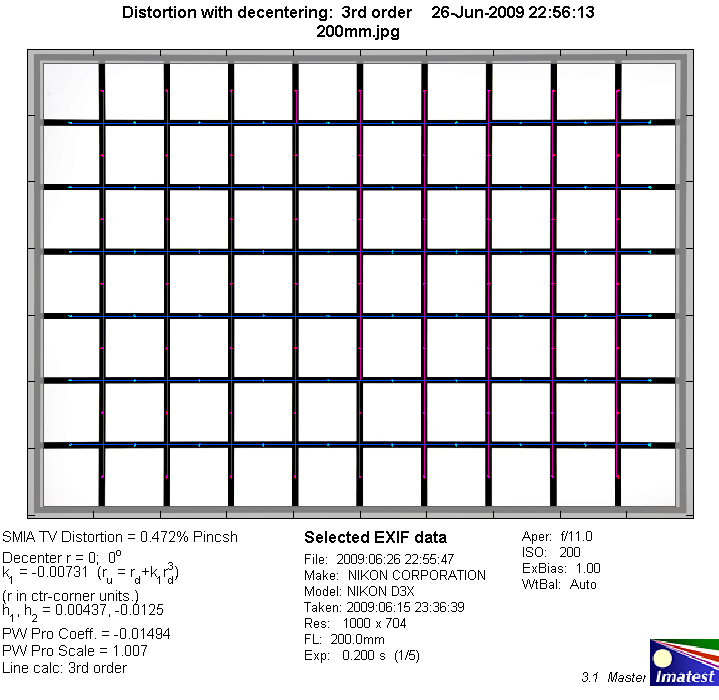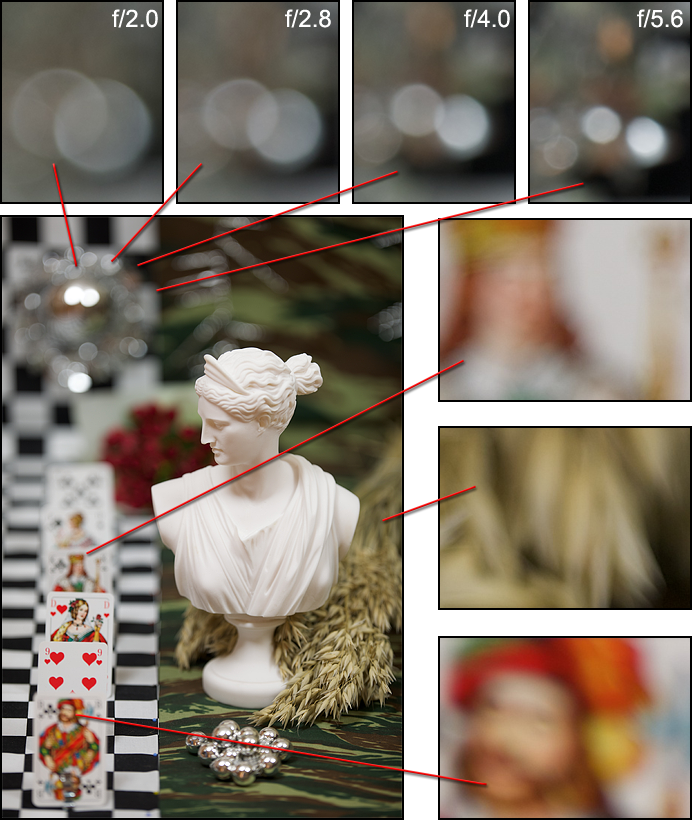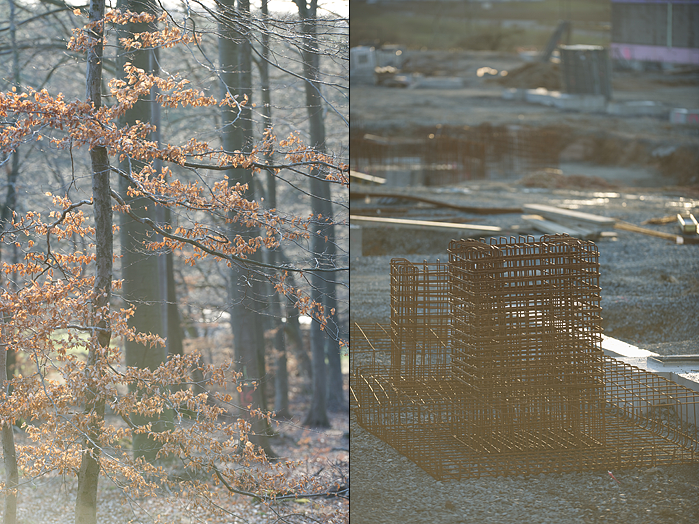|
Page 2 of 3

Distortion
Tele lenses usually are not flawed by heavy distortion and the 200 VR is no exception here. A slight amount of pincushion distortion can be measured in the lab, but it's hardly field relevant.

The chart above has a real-world size of about 120x80cm.
Vignetting
Fast primes lenses usually tend to show a noticeable amount of vignetting, however the issue is well under control here. With just 0,76 EV wide open light falloff towards the borders might be visible with some subjects, but stopping down helps to reduce vignetting to really negligible levels.
This charasteric remains when adding tele converters. Wide open, vignetting might be visible, but stopped down at least one stop is no longer detectable in the field.
We're performing our vignetting analysis based on
(uncorrected) JPEGs straight from the camera. The JPG engine of the Nikon D3x features a rather flat
gradation curve, thus has a moderate contrast characteristic, resulting in comparatively low vignetting figures - the
corresponding Canon figures are roughly 40% higher due to the more
aggressive default contrast setting.

MTF (resolution)
From a lens in this class, one expects outstanding sharpness and the lens does not disappoint in this regard. The center resolution is excellent wide open already and remains on this very high level until diffraction kicks in at f/11. The peak performance is reached at f/2.8 already, where the lens easily outresolves the sensor of our test camera.
The borders and corners follow a bit behind wide open, with "only" very good resolution, but stopping down helps to raise the sharpness here. The borders reach excellent levels at f/2.8 already, while the corners follow a tad later at f/5.6 (but are on a high level in the very good range on only slightly behind the corners).
We also measured resolution with tele converters attached. As to be expected, the center resolution drops with larger magnification, but slightly stopped down still reaches excellent figures with TC-14 and TC-17 and very good sharpness with the TC-20. It's a little surprising though that the shortest converter (TC-14) gives the weakest borders and corners. It's also interesting to note that with both the TC-17 and the TC-20 the border and corner sharpness initially drops a little when stopping down, but recovers later.
In summary the lens showed impressive performance, both naked as well as combined with any of the available three TCs.
It's worth noting that the lens showed a slight amount of focus shift when stopping down (residual spherical aberration).
Please note that the MTF results are not directly comparable across the different systems!
Below is a simplified summary of the formal findings. The chart shows line widths
per picture height (LW/PH) which can be taken as a measure for sharpness.
If you want to know more about the MTF50 figures you may check out the corresponding
Imatest Explanations

Chromatic Aberrations (CAs)
Chromatic aberrations (color shadows at harsh contrast transitions) are a well under control and certainly no issue at all.
Adding tele converters to the lens changes this behaviour, though. This is especially true for the TC-20, which leads to very significant amounts of CAs. However, CAs can easily be corrected in software or by the camera itself (most modern Nikon DSLRs remove CAs themselves if you shoot JPGs).

Bokeh
One of the primary usages of large aperture primes is of course to isolate the main subject from the background with very narrow depth of field. In this case the rendering of out of focus areas is an important aspect.
The 200 VR delivers a very pleasing bokeh with creamy blur, that only in the transition zone shows a tad of nervousness. Backgroound highlights show a cat's eye shape towards the outer edges, but otherwise are perfectly circular, even stopped down, and feature smooth and even distribution without any serious highlighting. The bokeh is not troubled by colour fringing (see below) which adds further to the already outstanding results here.

Bokeh Fringing / Longitudinal Chromatic Aberrations (LoCA)
LoCAs (non-coinciding focal planes of the various colors) are a common issue with relatively fast glass and usually lead to halos on contrasty subjects with different colors - magenta (red + blue) in front the focus point
and green beyond. Truly "apochromatic" lenses don't show LoCAs but these lenses are very rare. Unlike lateral CAs, LoCAs cannot easily be fixed in post processing.
Well, as you can see below, this is one of the rare lenses. There is a very tiny amount of LoCAs detectable wide open, but in the field this is certainly not an issue.
Also visible here is the slight focus shift when stopping down as mentioned in the MTF section.
Flare/Glare
After all the praise, there is one issue we need to address: glare. The lens does not really like backlight and visibly loses lots of contrast in these conditions. As you can see in the sample pics below, the lens also tends to produce a visible amount of haze opposite to the source of the light in the frame.

|